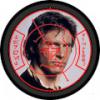-
Posts
72 -
Joined
-
Last visited
About air-ship

Contact Methods
-
Website URL
http://www.501st-creations.co.uk
Profile Information
-
Gender
Male
-
Location
Devon, UK
-
Interests
Blaster building, Comm Systems, Electronics, My Family and Trooping when I get my armour signed-off – eventually!
Standard Info
-
Name
Rees
Recent Profile Visitors
600 profile views
-
Hi Rob, Many thanks for the compliment and yes, it's good to bring fellow troopers' ideas to fruition. Hopefully it will be taken up because it's simple, elegant and really easy to use. Get in touch when you move down and we can hook up – my location is near Launceston on the Devon side. I'm always happy to help with whatever I can. Cheers, Rees.
-
Hi Troopers, Well I thought I would make a professional lead and here it is on the forum: Cheers, Rees.
-

Does anyone never tried walkie talkie?
air-ship replied to lightside's topic in Electronics for Helmets / Blasters
Mmmm. processing....... I've tried Bluetooth but v.2 protocol is not fast enough because of the codec and compression. There is a delay of around 20 milliseconds. Roll on affordable Bluetooth v.3 dongles and speakers. Then I can build amps that use this technology. Your nirvana is interesting but my guess is that it would all have to be housed in your armour with a wireless link to your helmet. I'd like to think that's what a Stormtrooper would have had. 802.11 would work but the power requirements are very high. Also, it's a difficult technology to make into an affordable solution. Yes I agree, PTT is a problem but done correctly I'm sure it could work. I like your suggestions but the blaster holding / balancing is still an issue while pressing the button. Still processing...... -
Excellent idea. I guess you could mount the sensor on a velcro strap (attach to the bottom of your middle finger) and stick a thin round magnet inside the end of your thumb (in your gloves that is). Mmmm. Got me thinking has this. The sensors are usually quite large though. I have one here and it's pretty bulky. Check out my response to a---------------
-

Does anyone never tried walkie talkie?
air-ship replied to lightside's topic in Electronics for Helmets / Blasters
I've been doing some R&D on a multi-pole plug and wire system that will run between your helmet and armour. It's designed to pass a signal from your mic, a signal to Hovi tips, a signal to a back plate mounted speaker and also to power a helmet mounted fan. All power packs and amps etc. are mounted in your chest plate. Is anyone interested in this sort of thing? Just two plugs and a wire. It's also large enough to unhook with your gloves on and is mounted on an elastic mount so it pops back into your chest plate. It would be very neat and professional like all the gear I make. They are quite time consuming to build but the solution is good. I just have to work out if anyone is interested – let me know if you are please. Also, I made a really nice PTT unit. It has a microswitch and a slide switch. So, you can have it PTT or always on using the slide switch. It's very small but I had the same problem as noted in these threads. It's not that easy to operate with a blaster in your hand. I did attach a Velcro strap and looped it around my finger. This enabled me to press it against my thumb to operate or press against my blaster. Both solutions worked but I'm sure there is a better way to hold / mount it. It's made from the volume control you get on VOIP headsets – I've got loads of them from the microphones I adapt for my amp kits. The connector is a 2.5mm DIN type that works really well. I've come across blaster mounted switches, chest plate switches, glove inserted micro switches etc. I still don't think this problem has been solved yet. I need to think on it a bit more and any development suggestions are welcome. Cheers, Rees. -
You can get them from me Brad. All wired up and ready to go. Check out these links and my other gear: ----------- Cheers, Rees.
-

Amp & Com system with magnetic switch
air-ship replied to Dmian's topic in Electronics for Helmets / Blasters
Good point Vern. I've carried extensive (50 hours plus) R&D with FM and Bluetooth short range comms and there is always a hitch. FM (any wireless FM/AM system) seems to suffer from latent interference and Bluetooth v.2 has codec issues (a time delay). With FM the issue is the power of the transmitter. If it is too close then it causes interference. Have you got any insights into this? I know the wireless mic kits are FM based. Does yours work well? Are you using this system? Most FM wireless mic kits have a trimmer tuning screw so you can adjust the kit. -

Amp & Com system with magnetic switch
air-ship replied to Dmian's topic in Electronics for Helmets / Blasters
Hi Damian, I'm working on a production system right now. It will take some time to get right though and I don't expect it to be ready for a few months. Basically, the reed switch is operated by a magnet (as you already know). This enables you to switch (flip / flop) between a PMR (Private Mobile Radio) and your comm / amplifier system (ROM/FX, TKVox, Voice Core etc). In principle it all sounds really easy. To do it well and make it totally reliable, lightweight and power efficient is not that easy. The other thing is, your helmet will be stuffed full of electronics and batteries etc. Of course you can mount the electronics in other parts of your armour. Unfortunately you then have wires trailing out of your helmet. My TKVox amps keep everything inside your helmet. Keep me posted if you make any progress. I'll subscribe to this post to see if anything happens. Cheers, Rees. -

Putting in a ROMFX into armor (AP helm)
air-ship replied to Crimotaku's topic in Electronics for Helmets / Blasters
Paul, my mate Dave Marsden has been transplanting his ROM/FX into his lid. I've pinged him on FB to take a look at this thread. He is another talented guy and produces very neat installs. R -
Good stuff Paul. Carsten and myself are currently working together on a project. He's a seriously talented guy and a pleasure to work with. R
-
You're right Paul. Blue Tac does the job beautifully. It's worth working it in your fingers for a minute or two to get it really hot and sticky. Then it will make an excellent seal. I did this with one of my lids when I was researching and it did a great job. I covered up all the Blue Tacked areas with a couple of ABS discs to match the inside of my lid. The frown vent trick does work really well though. R
-
Okay Tony, the simplest way to do it is to use small caps to encapsulate your speakers. Drill a hole behind your aerators (and hollow out the aerators with an 8mm or 10mm drill bit. I suggest using smaller drills first and then work up to a bigger hole). Then use something like a kids toothpaste cap if your speakers are below 25mm. If the speakers are bigger then use a bigger cap. They key to getting it to work is to mount the speakers in acoustic deadening material (used for car doors) or white tac. Then make sure every edge and hole of the lid is sealed and airtight within you lid. The lid or cap should not be too big and it will resonate and help amplify the speaker. Okay, so you probably know all this already and it's been a technique used for a long time. Next comes the funky bit. Your microphone must be perfectly centred between the speakers with a gap of around 20mm between the mic and the front of your lid. A unidirectional mic is essential because it receives sound in only one direction. The XYZ position is critical and should be carefully and patiently experimented with until the feedback is eradicated. But, read on... Then the little bit of magic. Your frown vents should open, e.g. filed or drilled through to enable airflow. This airflow really helps to reduce feedback. I understand why but it would require a very lengthy description so I'll leave that one out. I spent a long time working out how to do this using various techniques. As I mentioned in my previous reply, you can't eradicate feedback completely but you can use some simple tricks to reduce it. I also have my FRT / FRS but I'm keeping that one under wraps because it took a lot of R&D to make it work. Let me know how you get on. Patience and some minor innovation really works. Cheers, Rees.
-

TCI and Radio shack amp feedback
air-ship replied to GosHawk's topic in Electronics for Helmets / Blasters
Hi there. Feedback logic? Mmmmmmmmmmmm. Not sure about that one. I make very nice ultra compact Trooper amps and feedback is as old as the universe. It is a very difficult thing to deal with based on good old physical laws. However, there are some tricks to combat it. I make Hovi mic tips over here in England (as well as helmet amp systems) and I build in a system to reduce feedback. The main issue is to do with with mic position versus position of speakers versus airflow. I kid ye not! Yes, airflow, it makes a difference. PM me if you need any more info. Cheers, Rees. -
Hi Tony, I worked out the feedback problem.......... You can't stop it but you can work with it! I created a set of comm systems that help to defeat feedback. I call it FRT that's short for FART, sorry, no, I meant Feedback Reduction Technology also occasionally called FRS, Feedback Reduction System. I much prefer the FRT – much more fun. Seriously though, it does work with Hovi mix mic tips (I make them over here in Europe - Stomper makes them in the USA). With regards to digital walkie speaker. Well yes, they would work. However, you would have to shield them to an airtight level. Then, guess what, you still get some feedback. Sonic Dymanics is a weird old thang. If you need any help just PM me. R ;-)
-
Hey all on this thread. I'm going to stick a big greasy spanner in this works. I much prefer an E-11 ANH without a Hengstler or Mag Tubes. The lines are cleaner, the scope looks better and it is far better balanced in your hand. I only build E-11's with a Hengstler (and Mag Tubes) to house ancillary electronics. I did a lot of research (many hours) to work out how the wires work. My educated guess as a designer type is that the wires would definitely enter into the back of the Mag Tubes. Where else would they go considering the idea that it was a targeting system. Any comments guys? R ;-)



